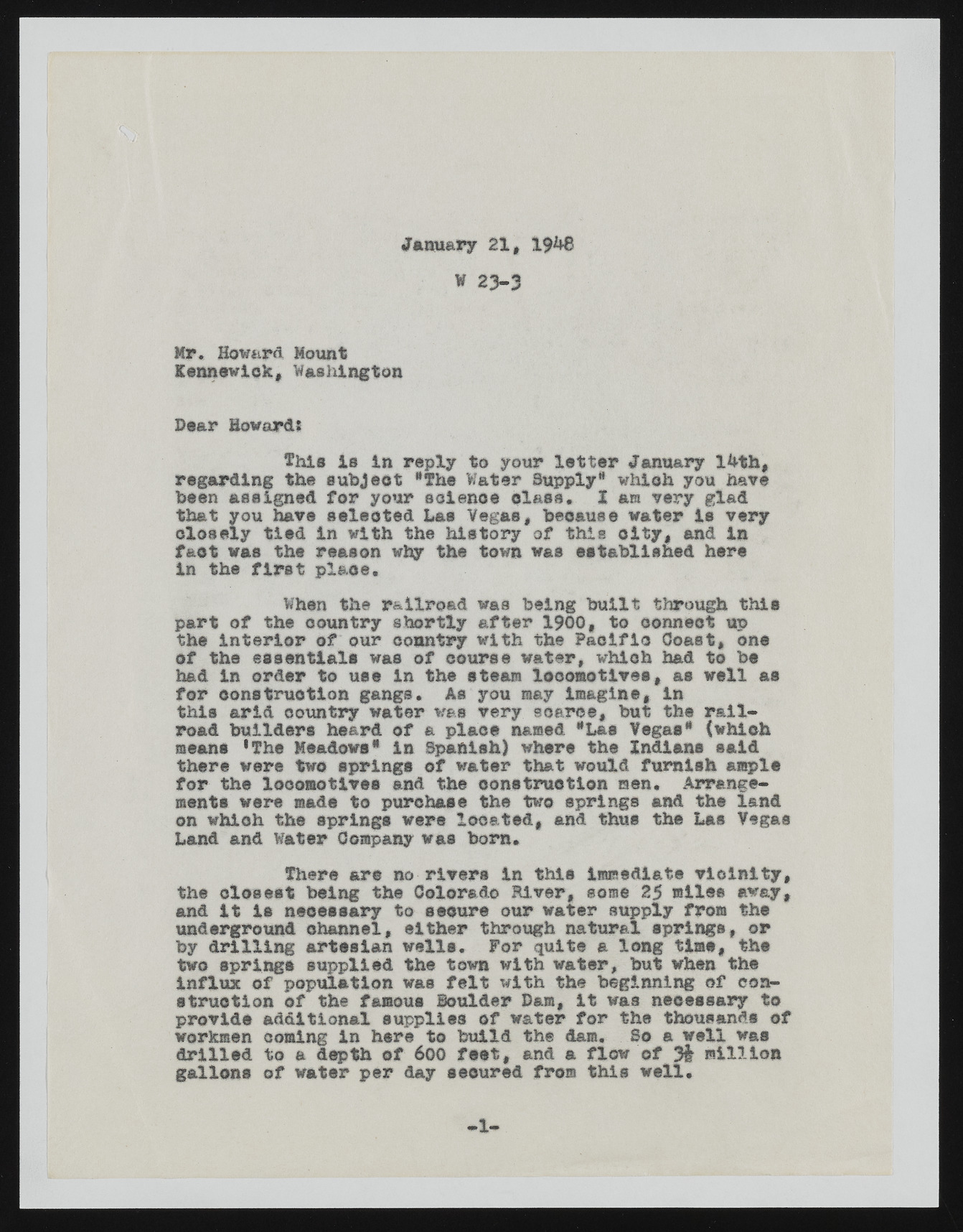Copyright & Fair-use Agreement
UNLV Special Collections provides copies of materials to facilitate private study, scholarship, or research. Material not in the public domain may be used according to fair use of copyrighted materials as defined by copyright law. Please cite us.
Please note that UNLV may not own the copyright to these materials and cannot provide permission to publish or distribute materials when UNLV is not the copyright holder. The user is solely responsible for determining the copyright status of materials and obtaining permission to use material from the copyright holder and for determining whether any permissions relating to any other rights are necessary for the intended use, and for obtaining all required permissions beyond that allowed by fair use.
Read more about our reproduction and use policy.
I agree.Information
Digital ID
Permalink
Details
Member of
More Info
Rights
Digital Provenance
Publisher
Transcription
January 21, W 23-3 Mr. Howard Mount Kennewick, Washington Dear Howards fhi* ie in reply to your letter January 14th, regarding the subject “The Water Supply” which you have been assigned for your solenoe class. I am very glad that you have selected Lae Vegas, because water ie very closely tied in with the history of this city, and in fact was the reason why the town was established here in the first place. When the railroad was being built through this part of the country shortly after 1900, to connect up the interior of our country with the Pacific Coast, one of the essentials was of course water, which had to bs had In order to use in the steam locomotives, as wsll as for construction gangs. As you may imagine, in this arid country water was very scarce, but the railroad builders heard of a place named *tae Vegas* {which means 'The Meadows* la Spanish) where the Indians said there were two springs of water that would furnish ample for the locomotives and the construction men. Arrangements were made to purchase the two springs and the land on which the springs were located, and thus the Las Vegas Land and Water Company was born. Tliere are no rivers in this immediate vioinlty, the closest being the Colorado River, some 25 miles away, and it is necessary to secure our water supply from the underground channel, either through natural springs, or by drilling artesian wells. For quite a long time, the two springe supplied the town with water, but when the influx of population was felt with the beginning of construction of the famous Boulder Dam, it was necessary to provide additional supplies of water for the thousands of workmen coming in here to build the dam. So a well was drilled to a depth of 600 feet, and a flow of 31 million gallons of water per day secured fro® this well. -1-

